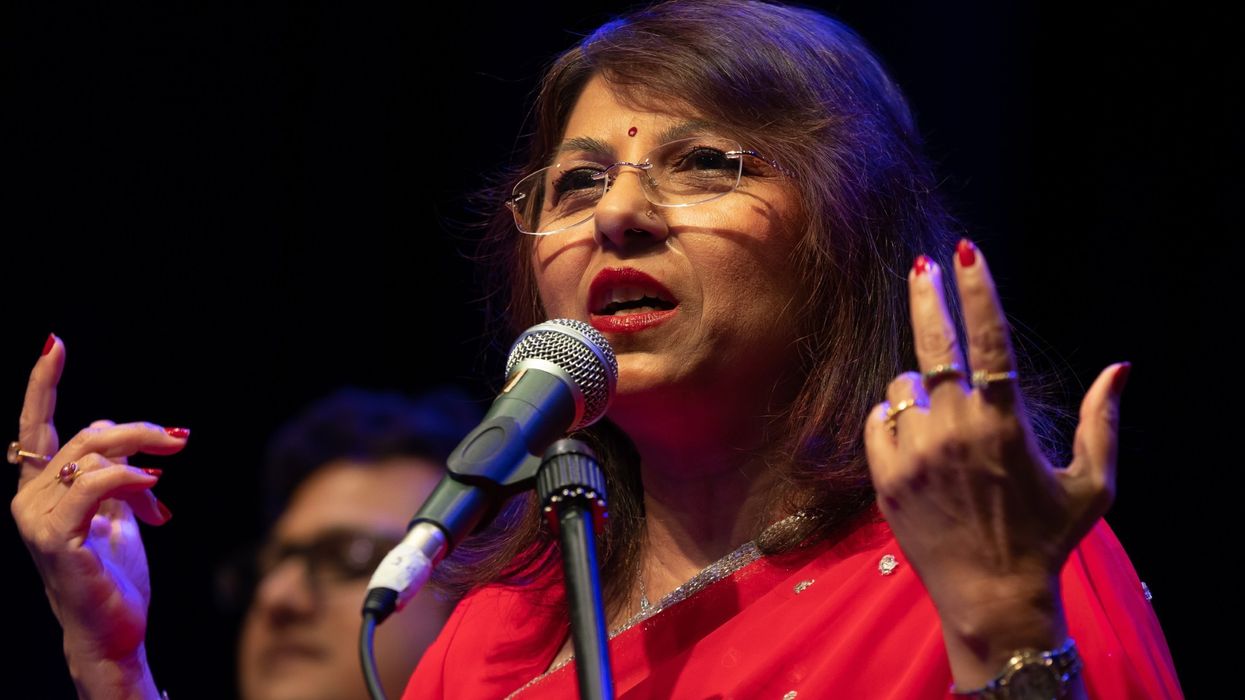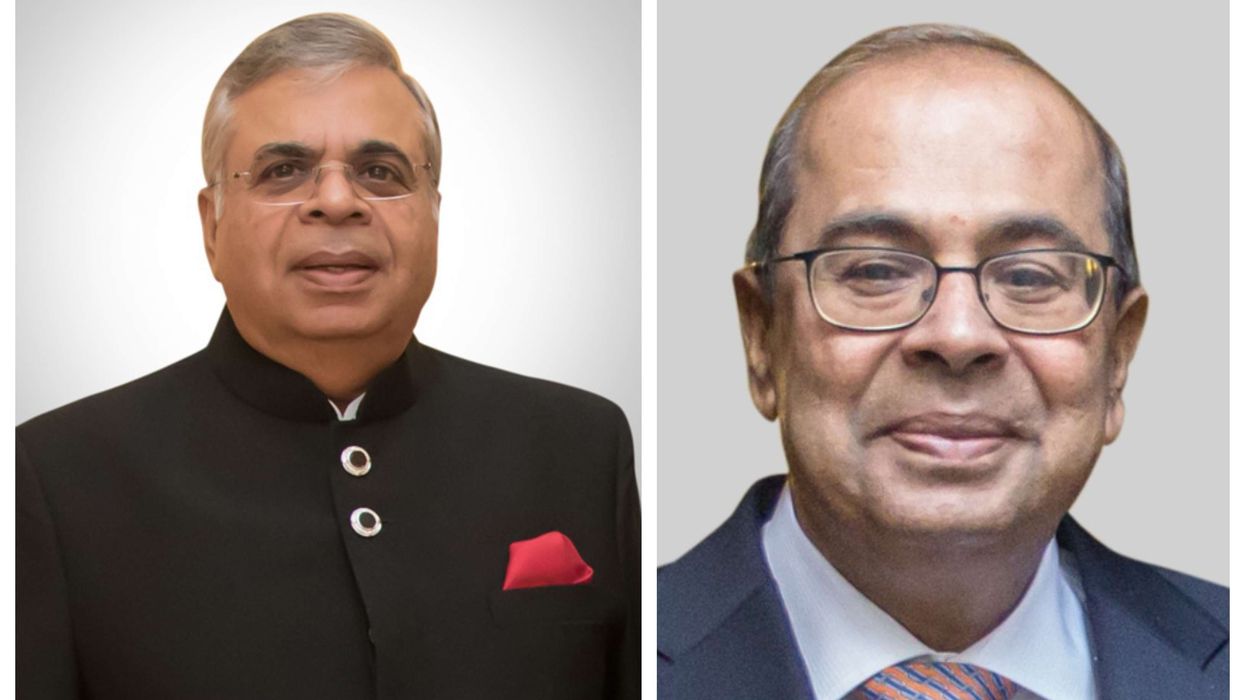ACCLAIMED singer Swati Natekar will pay a heartfelt tribute to her late mother Dr Sushila Pohankar at the Utsav 2024 concert taking place at Harrow Arts Centre next Sunday (21).
The show will see leading artists from different disciplines, including Natekar, Kathak dancer Ashwini Kalsekar and sarod virtuoso Debasmita Bhattacharya, remember the profound scholar, erudite teacher, earnest researcher, sensitive composer and gifted performer.
The culturally rich concert will also raise funds for Dementia UK. Having learned everything from music to important life lessons from her mother, the show will be particularly special for Natekar and she was happy to discuss it with Eastern Eye.
The popular singer also spoke about her mother’s amazing life and legacy.
Tell us a little about your inspiring mother’s life and legacy.
Although we all love and respect our parents immensely, I have a special respect for my mother and Guru Vidushi Dr Sushila Pohankar. Coming from a family of ardent music performers, Sushila ji started singing from an early age. Later she was offered a Bollywood movie, which her conservative father instantly rejected. Soon she was married off in a very traditional family, where women were not allowed to perform professionally. Standing against social norms, she did her music teaching career professionally, while raising kids and simultaneously achieving educational degrees like a BA, double MA (music and sociology) and PhD in music.
She touched countless lives and inspired many women. But how did she impact you as an artist?
I’ve grown up seeing her dedication towards music and being extremely generous in sharing her knowledge with her disciples. Musically she was an absolute genius. As a composer, she would compose in any genre within 10 minutes. I feel fortunate to have inherited all these qualities from her.
What is the biggest thing you learned from your mother?
Her perseverance. Her belief that even after marriage, a woman can continue with her passion or career has been useful in my life too. Especially after coming to UK in 1990 – I continued with my music career as a performer, recording artist and a composer while teaching music, raising two children and taking care of our home. Though a big credit goes to my husband and children for their support, this wouldn’t have happened if I hadn’t prioritised to continue with my music.

What do you think was your mother’s most special quality?
She was a lady of many talents. A wonderful singer, amazing composer and an expert cook. Once a poet had come to our house with a maharaja. He wrote lyrics and challenged mum to compose it. She just took the harmonium, started reading lyrics and composing them at the same time. Which of her achievements are you most proud of? The way she did her education, from graduation to PhD, while working full time as a professor of music and raising us children simultaneously is something I’m very proud of. That shows, when there is a will, there’s always a way.
Tell us about the Utsav 2024 show.
Utsav 2024 will be an ode to Vidushi Dr Sushila Pohankar, an artist extraordinaire, professional singer, composer and an academic. To celebrate her birth centenary, three leading female artists will present a tribute to Dr Pohankar’s legacy, which includes well known Kathak dancer Ashwini Kalsekar, brilliant female Sarod virtuoso Debasmita Bhattacharya, and myself concluding the evening with my very special vocal presentation.We will be accompanied by amazing musicians like Hanif Khan (tabla), Harkiret Singh Bahra (tabla), Rekesh Chauhan (harmonium) and Satwinder Pal Singh (sarangi).
Hosted by the talented Arnika Paranjape, this event is supported by the Arts Council of England, alongside media partners Asian Media Group, and is also supporting fund raising for the Dementia UK charity.
What can we expect from your performance at the show?
As this is a tribute concert to my mum on her birth centenary, I will be performing some beautiful Indian classical and thumri compositions created by her, under the pen name of Surmohee.
How did you decide the line-up?
I started Utsav in 2023, to promote UK based artists, many of whom are immensely talented. I decided to keep a variety of art forms and for this, there couldn’t have been a better choice than Ashwini or Debasmita. Also, all our supporting artists are elite.
You are a versatile artist, but what kind of music do you enjoy performing live?
I’ve always believed in versatility and my guru always taught us that, not just classical, but every kind of music can be beautiful. So, I’ve always enjoyed working with different genres, be it classical, thumri, ghazals or fusion.
How do you feel being on stage?
Amazing. It feels great when the audience enjoys the performance with you or gets emotional on a sad song. After a while, the audience feels like your extended family. Sometimes you face challenges too. When my mother passed away, I couldn’t go to India, but instead had to perform a solo concert within a week, which was planned months before.
What would you say inspires you as a world-class live performer?
I grew up listening to amazing music within the family, as well as by the visiting legendary artists. Listening to the recordings of the greats like Ustad Amir Khan, Kishori Amonkar, Ustad Rashid Khan, my brother Pt Ajay Pohankar and Ustad Mehdi Hassan is always inspiring.
Why should we all come to the Utsav 2024 show?
This tribute concert is very special for all the performers, not just me, as my mother was a very respected personality. All the artists performing are of very high quality and the audience is surely in for a treat. Utsav 2024 is at Harrow Arts Centre in London next Sunday (21).
www.harrow arts.com and www.swatinatekar.net





 Vivek Nityananda
Vivek Nityananda  Taraash Mehrotra as Nikhil
Taraash Mehrotra as Nikhil






